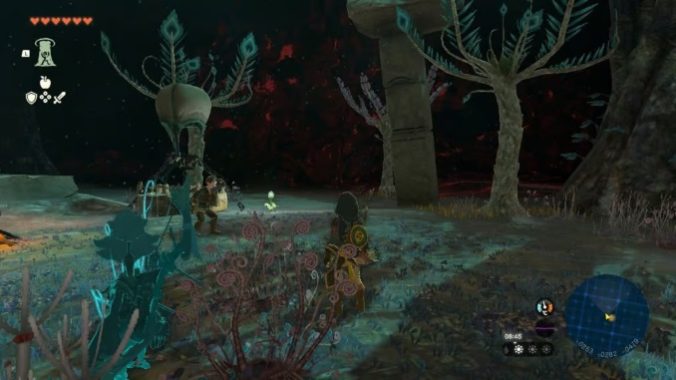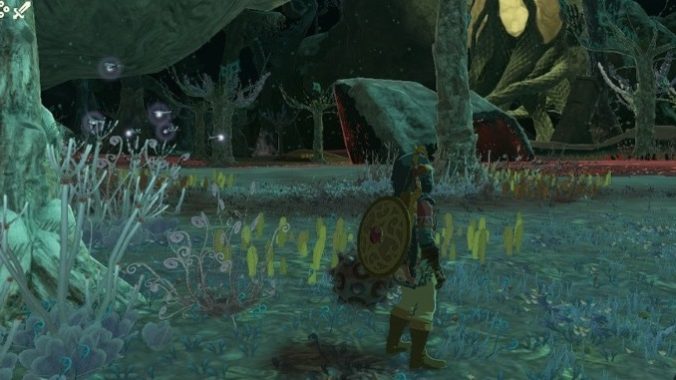I wanted to be a marine biologist when I was a kid. Enamored with the oceans’ colorful creatures and biomes, BBC’s The Blue Planet captured my four-year-old self’s attention and imagination more than Sesame Street or Thomas the Tank Engine ever could. Narrated by the extraordinary voiceover artist David Attenborough, The Blue Planet presented a firsthand look at the ocean. Some episodes covered marine mammals or a massive feeding frenzy, but the scenes that gave a haunting glimpse into the inhospitable, other-worldly and aptly named twilight zone—a part of the ocean almost completely untouched by sunlight and largely unexplored by mankind—were my absolute favorite.
I watched and rewatched that Netflix DVD as many times as I could until my parents wanted to rent something else. I begged them to rent it again once it was out of my clutches. To this day, moments highlighting the hairy angler or any number of bioluminescent invertebrates live rent-free in my head. For years, presumably until around the first time I took an actual biology class—or until I saw Raiders of the Lost Ark for the first time and my interests shifted elsewhere—I needed to unravel the ocean’s grotesque mysteries for myself.
Nothing was as exciting as a new animal that didn’t look like anything I’d ever seen before. And don’t even get me started on bioluminescence; sure, fireflies were cool, but when a fish could glow? That was something exceptional.
So when reviews and initial gameplay for The Legend of Zelda: Tears of the Kingdom dropped, I was thrilled. Not only because the sequel to my favorite game somehow managed to capture and double-down on so much of what made Breath of the Wild special, but because it introduced something we hadn’t seen advertised in the buildup to the game’s release: The Depths.
An arcane realm buried underneath Hyrule that both mirrors and defies everything you think you know about the familiar fantasy world sounded too good to be true, but also very familiar. Seeing gameplay from Tears’ underground area delivered me back to that childhood fascination. I knew I’d need to go hands-on before I laid my suspicions to rest.
Roughly 10 hours into the game, I finally made it to one of Tears of the Kingdom’s many chasms. My Switch’s fan chugged along as the little handheld that could rendered the abyss before me. The Chasm became a bottomless pit as my suspense stretched the minute-long fall into what felt like a never-ending dive into the unknown.

Almost total darkness greeted me. The dim horizon, dotted with the glow of far-away Poes, undiscovered Lightroots, encampments teeming with twisted monsters, and derelict ruins, reminded me so much of the underwater environments I’d pored over as a kid, down to the most minute details.
Even some of The Depths’ more mycelial flora feel aquatic. The towering, slender mushrooms resembled deep-sea coral reefs as much as any mushroom I’ve ever seen in real life. Mushrooms aside, however, every other plant found in the Depths evokes images of ocean floor life. From tall, plume-y greens all the way down to the small plants that adorn the ground, these designs might as well have been plucked out of the ocean’s depths rather than Hyrule’s. The deepest parts of the ocean are desolate, but not unlivable, sustaining the most resolute and well-adapted organisms.
Sticking with that theme, every creature found in the depths seems to have evolved or adapted in some way to survive. Deep fireflies, for example, glow the same faint, pinkish red as the fairies you might find in caves and fountains in Hyrule. It’s a subtle choice that could suggest a discernible food chain for some of Zelda’s more diminutive species. Maybe they evolved that way to attract fairies so they could eat them. While the game doesn’t explicitly say this, the world on display in both Breath of the Wild and Tears of the Kingdom feels alive and naturalistic enough that this could very well be the case. Again, that mirrors many of the bioluminescent animals you’d find deep in the ocean. Angler fish, for example, use the glowing bulb at the end of their “rod” to attract prey.
Even the Depths’ version of Bokoblins points to something found mostly in the deepest parts of the ocean. Extremophiles, organisms that thrive in the most extreme environments, are found in places no other life could exist in places like hydrothermal vents and salty lakes. The depths’ equivalent to this? Gloom. While some creatures can pass through the Gloom for brief periods of time, Bokoblins, Moblins and other enemies in the Depths have made it their own. It gives them their own strengths and weaknesses and makes it easier for them to survive where others might now.
The particle effect that permeates every square foot of the Depths really bridges the gap between digital and aquatic depths for me. Like muddy mist, these gray-brown flakes are a dead ringer for marine snow, one of the ocean’s most fascinating phenomena.
Because there’s no sunlight deep in the ocean, marine plant life barely exists past a certain depth, meaning that creatures at the bottom of the food chain need another means of nourishment that doesn’t involve eating plants. That’s where marine snow comes in. When an organism dies in one of the ocean’s upper layers, it decomposes into the water around it. As the carcass falls, it leaves little flecks of flesh behind. Many bottom feeders will filter them out of the water and sustain themselves off of what little nutritional value the marine snow can provide.
Tears of the Kingdom’s Depths capture the same bizarre, mysterious aesthetic as the ocean’s largely uncharted deep waters. In its richly realized environments, warped monsters and poignant aesthetic choices, the latest Zelda game has helped me rekindle my childhood obsession with the deep without needing to worry about getting crushed under an ungodly amount of water pressure. All it needs is the warm, soothing voice of David Attenborough.
Charlie Wacholz is a freelance writer and college student. When he’s not playing the latest and greatest indie games, competing in Smash tournaments or working on a new cocktail recipe, you can find him on Twitter at @chas_mke.

